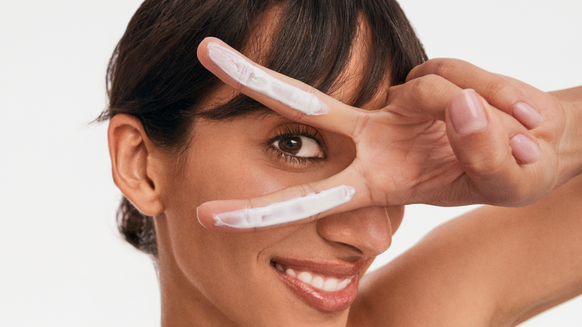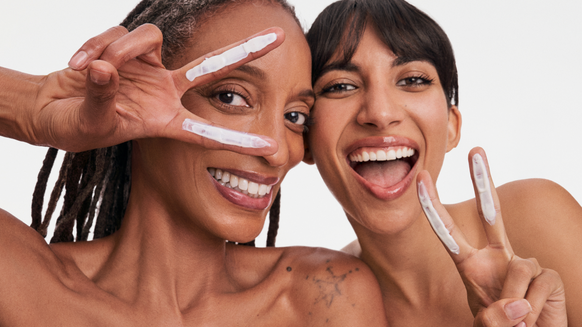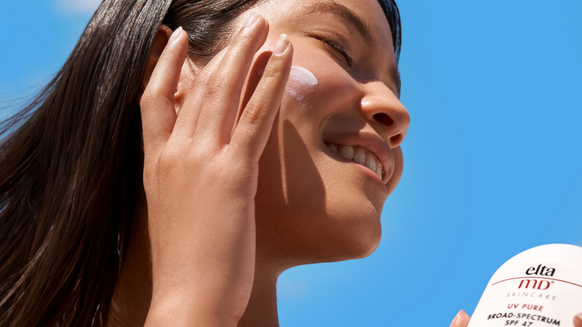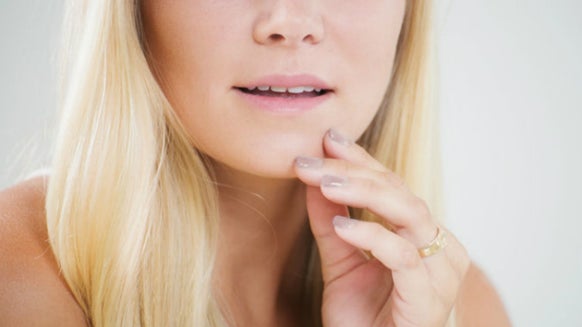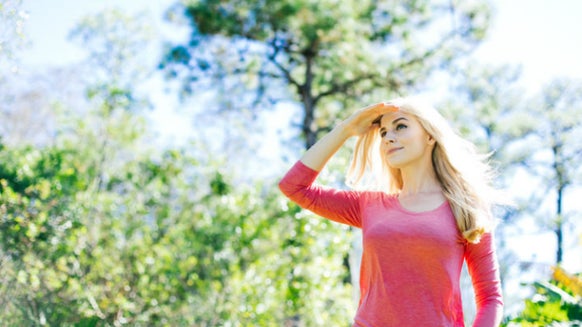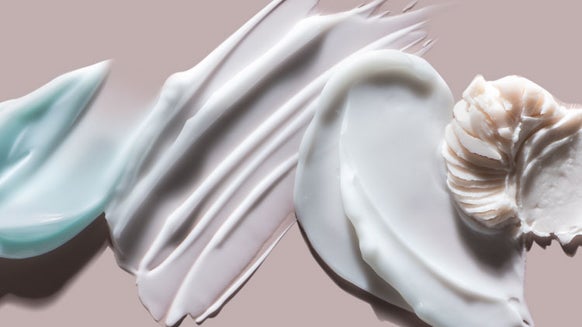5 Things Even Smart People Get Wrong About Sunscreen
You’re probably well-versed in the basics of sun protection: Wear SPF daily, reapply it diligently, choose a broad-spectrum sunscreen. But even the most skin-savvy among us often buy into common myths that can leave us exposed to sun damage, premature aging and even an increased risk of skin cancer (if you’ve ever used the words “base tan,” keep reading).
To help clear up the misconceptions, we checked in with Dr. Deborah Sarnoff, a board-certified dermatologist in New York and President of The Skin Cancer Foundation, to tell us whether some common beliefs about sun protection are true or false.
1. “I don’t need to wear sunscreen if I plan to spend most of the day indoors.”
Dr. Sarnoff: False! Even when spending most of your time inside, you should still apply sunscreen to all exposed areas of skin, especially if you’re going to be spending time right by a window. There are two types of ultraviolet light that damage your skin and increase your skin cancer risk: ultraviolet A (UVA) and ultraviolet B (UVB). Window glass blocks UVB rays but not UVA rays. In fact, studies have shown that chronic exposure to UVA rays through windows may accelerate skin aging by five to seven years, and most important, can increase skin cancer risk. Furthermore, applying sunscreen every day is a very healthy habit, and you’ll be protected if you end up spending unplanned time outdoors.
2. “As long as I don’t burn, it’s healthy to get a little color. A base tan helps prevent sunburn.”
Dr. Sarnoff: False and really false! There is no such thing as a safe “base tan” or a “healthy tan.” UV radiation is a proven human carcinogen, and unprotected exposure to these rays significantly increases your risk of developing skin cancer. Tanning, like sunburn, is caused by permanent DNA damage to the skin. The immune system sends repair enzymes to the site of sun damage, and as part of the repairs, they put up a wall of darker pigment to prevent further sunburn. But the repairs are never perfect, and some of the damage that has already been done can cause mutations in the skin cells; along with the defects from previous damage, they may prematurely age the skin and one day lead to skin cancer.
3. “A higher SPF number means I can safely spend more time in the sun.”
Dr. Sarnoff: This would be true if we all applied sunscreen exactly as directed, which is very hard to do! SPF—or sun protection factor—is a measure of a sunscreen’s ability to prevent UVB rays from damaging the skin. For example, if it takes 20 minutes for your unprotected skin to start turning red, using an SPF 15 sunscreen theoretically prevents reddening 15 times longer.
But SPF is tested in a laboratory under ideal conditions and it’s not true to how most people apply sunscreen! In the real world, most people don’t apply enough sunscreen (about two tablespoons to your entire body), in an even layer to all exposed skin. So, the protection you receive is typically much lower than what is listed on the product. Sunscreens with SPF values of 50+ can offer a valuable safety margin for people who want a little extra protection, for example, those who have an elevated risk for skin cancer, very fair or sensitive skin that always burns or people with certain conditions that make them more sensitive to the sun. But no matter what SPF level you choose, your sunscreen should be reapplied at least every two hours and immediately after swimming or sweating.
4. “Sunscreen prevents the body from getting necessary vitamin D.”
Dr. Sarnoff: False. Vitamin D is essential for all of us—it spurs bone growth, supports a healthy immune system and can help stave off a number of diseases, including osteoporosis. It’s true that the sun’s radiation is one source of vitamin D, along with certain foods and supplements. Unprotected sun exposure is not the best way to obtain enough of this vitamin, though, as a recent study found that sunscreens do not prevent vitamin D production. No matter how much sunscreen you use or how high the SPF, some of the sun’s UV rays still reach your skin.
It’s best to acquire vitamin D through diet and supplements, rather than intentionally exposing yourself to harmful UV rays. Fatty fish, fortified orange juice and milk are all good sources. Foods like egg yolks, beef liver and cheese also have smaller amounts of vitamin D. You can also speak with your physician about supplements to ensure you receive enough vitamin D.
5. “Some sunscreen ingredients are harmful.”
Dr. Sarnoff: Most of the questions around sunscreen safety are centered around oxybenzone. All sunscreen ingredients that are currently FDA-approved, including oxybenzone, have been used in the U.S. for many years, and there is no evidence that sunscreens with these ingredients are harmful to humans.
There are two main types of active sunscreen ingredients: chemical and physical. Chemical ingredients such as avobenzone and oxybenzone, work by absorbing UV rays and reducing their penetration into the skin. Physical ingredients, such as titanium dioxide and zinc oxide, are naturally occurring inorganic (mineral) ingredients that stay on top of the skin and deflect UV rays.
It’s important to note that absorption does not equal toxicity and more research needs to be done to understand what this means. People who may be concerned about sunscreen absorption can opt for physical sunscreens. Out of an abundance of caution, pregnant and nursing women may want to consider using mineral sunscreens.
While we encourage further research on sunscreen absorption, it is important that people continue to practice complete sun protection, including the use of sunscreens, as there is already substantial evidence showing that UV exposure is harmful and that sunscreen helps reduce skin cancer risk.
Look for The Skin Cancer Foundation’s Seal of Recommendation to be assured that a product is safe and effective. Scientific data for every product submitted for the Seal of Recommendation has been reviewed by The Foundation’s Photobiology Committee, a volunteer committee of dermatologists with expertise in photobiology (the study of the interaction between ultraviolet radiation and the skin).

From the latest hair and makeup trends to the best solutions for your skin issues, we've got all your beauty concerns covered!
